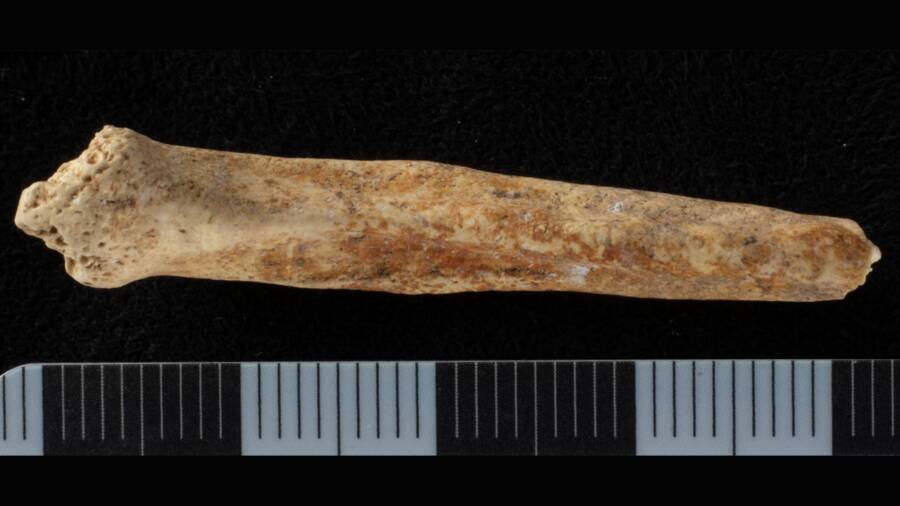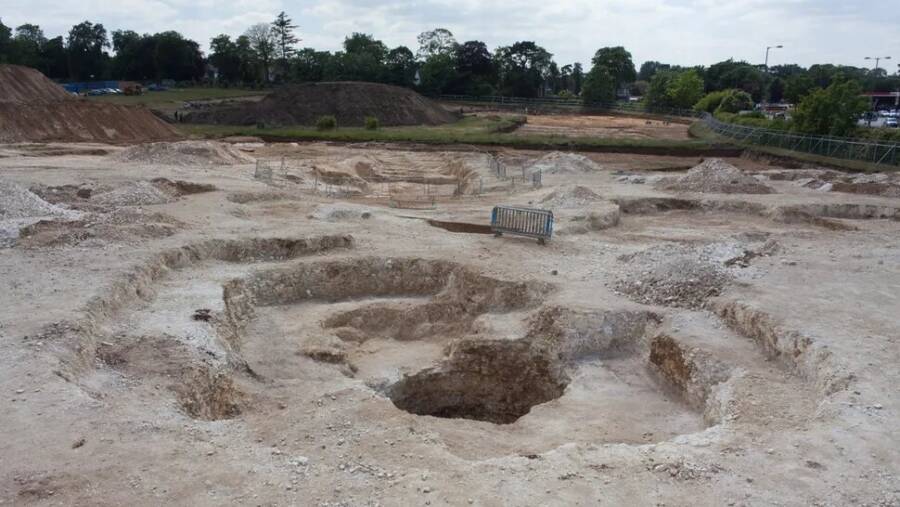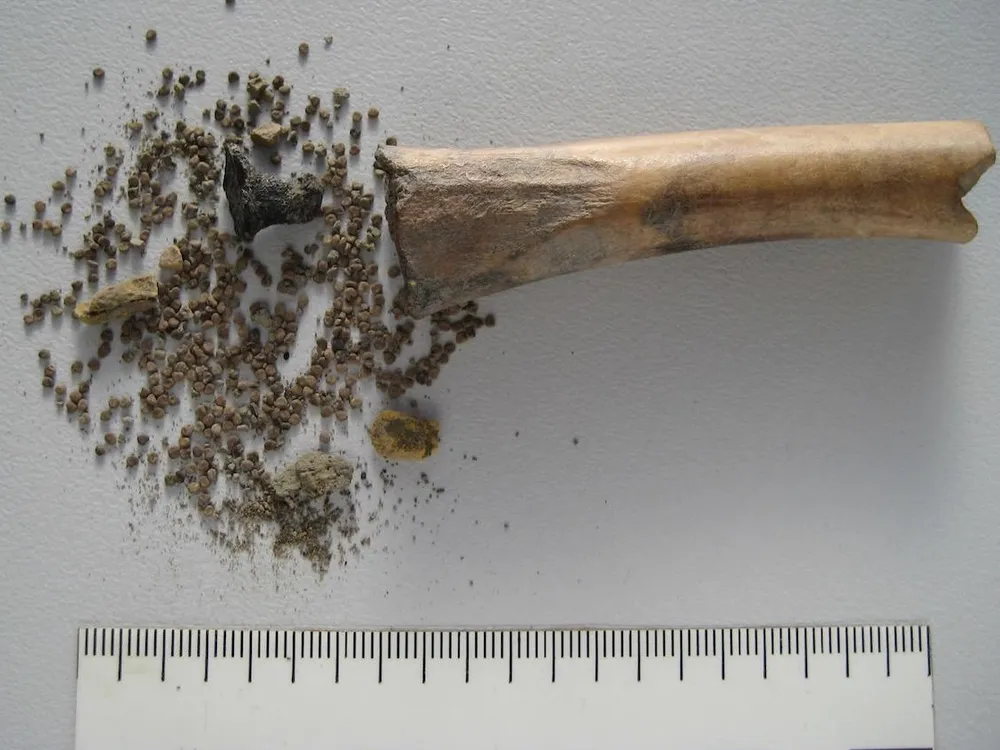The bone was deposited into the quarry shaft between the late first century C.E. and early second century C.E., and it may have been linked to Roman fertility rituals.

Ellen Green/Oxford Journal of ArchaeologyThis dog penis bone, or baculum, was painted with red ochre around 2,000 years ago.
A researcher in England is working to solve the mystery of a peculiar Roman artifact unearthed near London: a painted dog penis bone.
In 2015, archaeologists working at the Nescot site just south of London uncovered a quarry shaft filled with thousands of human and animal bones dating back 2,000 years to the Roman era. One of the bones, a dog baculum, was coated in red ochre. It’s the first of its kind from Iron Age Britain ever discovered, and bioarchaeologist Ellen Green set out to determine what its purpose was.
Her new study, published in the Oxford Journal of Archaeology, didn’t quite solve the mystery — but Green believes the bone may have been linked to fertility rituals.
Archaeologists Find A Dog Penis Bone In A Quarry Shaft
In 2015, archaeologists were excavating a quarry shaft at the Nescot archaeological site 12 miles south of London when they came across a mass of bones dating back 2,000 years. Many of them belonged to humans, but they also included the remains of 280 domestic animals, such as pigs, cows, horses, sheep, and small dogs.
The bones had been deposited into the 13-foot-deep shaft on at least nine separate occasions over a 50-year period between the late first century C.E. and the early second century C.E. Strangely, none of the bones showed signs of butchering or disease, and many of them belonged to very young animals.

Pre-Construct ArchaeologyThe ancient quarry shaft where the bone was discovered.
One of the bones caught the eye of Ellen Green, a bioarchaeologist at the University of Reading. It was the baculum, or penis bone, of a small dog, but it stood out because it had seemingly been painted red.
Using X-ray fluorescence, Green determined that the bone was covered in iron oxide. However, there were no metal items in the shaft, and iron oxide didn’t occur naturally at the site, so the red ochre on the artifact had been applied intentionally.
“I could not find any similar cases of Roman use of red ochre on bone, nor any examples from the British Iron Age,” Green told Live Science. “It is a very unique artifact from a very unique site, but it is ultimately a bit of a mystery.”
So, why was the bone painted red? That’s what Green set out to determine in her latest study.
The Possible Purposes Of The Painted Dog Baculum
Animal bones were utilized throughout Roman history for both ritualistic and practical purposes. From hair pins to musical instruments to vessels for storing drugs, Roman bone artifacts attest to the culture’s craftsmanship and ingenuity.

BIAX Consult/University of BerlinAn example of a Roman bone artifact — a hollowed-out animal bone containing seeds from a hallucinogenic plant.
Many of these artifacts, particularly those associated with male genitalia, had symbolic or ritualistic significance. “The penis had many associations in the Roman world and was used as a good luck charm and to ward away the evil eye,” said Green.
However, the dog baculum is unique in that it is the only known Roman bone artifact to have been painted with red ochre. “This is the only example I could find of an actual penis having potentially been used as a ritual object,” Green told Live Science.
Green hypothesized that the bone was used in a fertility ritual. Many of the bones in the shaft were found to have originated from animals born in the spring and summer and killed during harvest time, possibly linking them to agricultural fertility.
“While it is impossible to know for sure the reasons behind the deposition of humans and animals within the disused quarry shaft over approximately half a century, the evidence does support a link to ideas of abundance, new life, and the agricultural cycle,” Green wrote in her study.
Though its exact purpose may never be fully understood, the penis bone represents yet another addition to our knowledge of Roman life, art, and ritual.
After reading about the painted dog penis bone found in England, go inside the story of Kokopelli, the fertility god of the Pueblo culture in the southwestern United States. Then, read about what really led to the fall of the Roman Empire.





